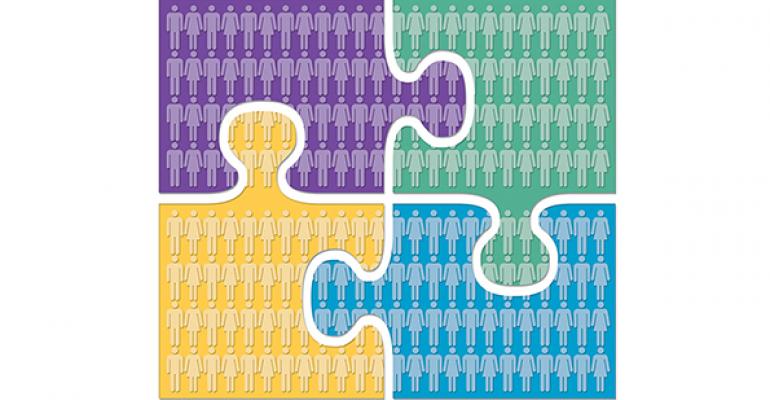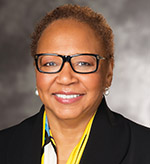 “It’s not just counting heads, it’s making our heads count. … We talk about cultural differences, and people have honest and open conversations. It’s more of a team building, cultural workshop. People leave energized and they learn about their teammates. It helps drive change from within.”
“It’s not just counting heads, it’s making our heads count. … We talk about cultural differences, and people have honest and open conversations. It’s more of a team building, cultural workshop. People leave energized and they learn about their teammates. It helps drive change from within.”
— Pat Harris, global chief diversity officer and vice president, global community engagement, McDonald’s Corp.
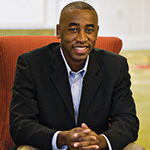 “When they go out to shop and eat, [people] feel more comfortable when they see folks who represent them in some way, shape or form, whether it’s background, experience, ethnicity or gender. ... For us in the industry, the more we can represent that, the more business for us.”
“When they go out to shop and eat, [people] feel more comfortable when they see folks who represent them in some way, shape or form, whether it’s background, experience, ethnicity or gender. ... For us in the industry, the more we can represent that, the more business for us.”
—James Fripp, senior director of global diversity and inclusion, Yum! Brands Inc. “It’s about leadership development. You have to identify people who are culturally competent in the areas in which you do business. It’s not a quota or race thing. It’s about choosing employees who can be culturally connected."
“It’s about leadership development. You have to identify people who are culturally competent in the areas in which you do business. It’s not a quota or race thing. It’s about choosing employees who can be culturally connected."
—Karim Webb, franchisee, Buffalo Wild Wings Inc.
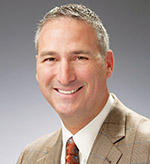 “We believe that we make better decisions by bringing people to the table that have a different set of backgrounds, different ways of thinking and different views of the challenges the business faces. … If you don’t make a deliberate effort, you’ll end up with people who all look the same,” he said.
“We believe that we make better decisions by bringing people to the table that have a different set of backgrounds, different ways of thinking and different views of the challenges the business faces. … If you don’t make a deliberate effort, you’ll end up with people who all look the same,” he said.
— Mark Blankenship, executive vice president, chief people, culture and corporate strategy officer, Jack in the Box Inc.
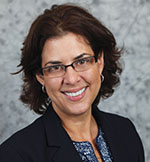 “The foodservice industry is one of the most diverse workplaces in the U.S. workforce — both in gender and ethnicity. And there is opportunity to become a leader in career development paths for women and minorities, whether in the corporate offices or as franchisees.”
“The foodservice industry is one of the most diverse workplaces in the U.S. workforce — both in gender and ethnicity. And there is opportunity to become a leader in career development paths for women and minorities, whether in the corporate offices or as franchisees.”
— Martha Tomas Flynn, senior director of global development services, Dunkin’ Brands Group Inc.
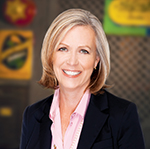 “[A diverse workforce is] good for business. To not be inclusionary and open would just be short-sighted.”
“[A diverse workforce is] good for business. To not be inclusionary and open would just be short-sighted.”
— Sandra B. Cochran, president and chief executive, Cracker Barrel Old Country Store Inc.
 "We have an operations advisory council, which … has women and men and people of different [roles and] experience levels in the organization. [It] brought us a different dimension, and it’s allowing us to fast-track a lot and implement various things with regard to articulating company goals."
"We have an operations advisory council, which … has women and men and people of different [roles and] experience levels in the organization. [It] brought us a different dimension, and it’s allowing us to fast-track a lot and implement various things with regard to articulating company goals."
— Srinivas Kumar, chief executive, CraftWorks Restaurants & Breweries Inc.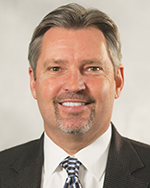 “The diversity and nature of our management team drives diversity in our crew. So we do a monthly review of staffing levels and personnel, particularly management, and talk about who in our ranks we want to take under our wings and take into a leadership role. … If our management team reflects [the demographics of our customer base], typically our crew will as well.”
“The diversity and nature of our management team drives diversity in our crew. So we do a monthly review of staffing levels and personnel, particularly management, and talk about who in our ranks we want to take under our wings and take into a leadership role. … If our management team reflects [the demographics of our customer base], typically our crew will as well.”
— Tom Lewison, chief executive, Wild Wing Café “Diverse work teams help to bring together people with different life experiences and world views to address a common set of corporate objectives. This is quite valuable for companies in mature and competitive industries, like foodservice, where new and innovative solutions for common industry challenges can create profitable competitive advantages.”
“Diverse work teams help to bring together people with different life experiences and world views to address a common set of corporate objectives. This is quite valuable for companies in mature and competitive industries, like foodservice, where new and innovative solutions for common industry challenges can create profitable competitive advantages.”
— Dan Kim, founder and chief concept officer, Red Mango Inc.

